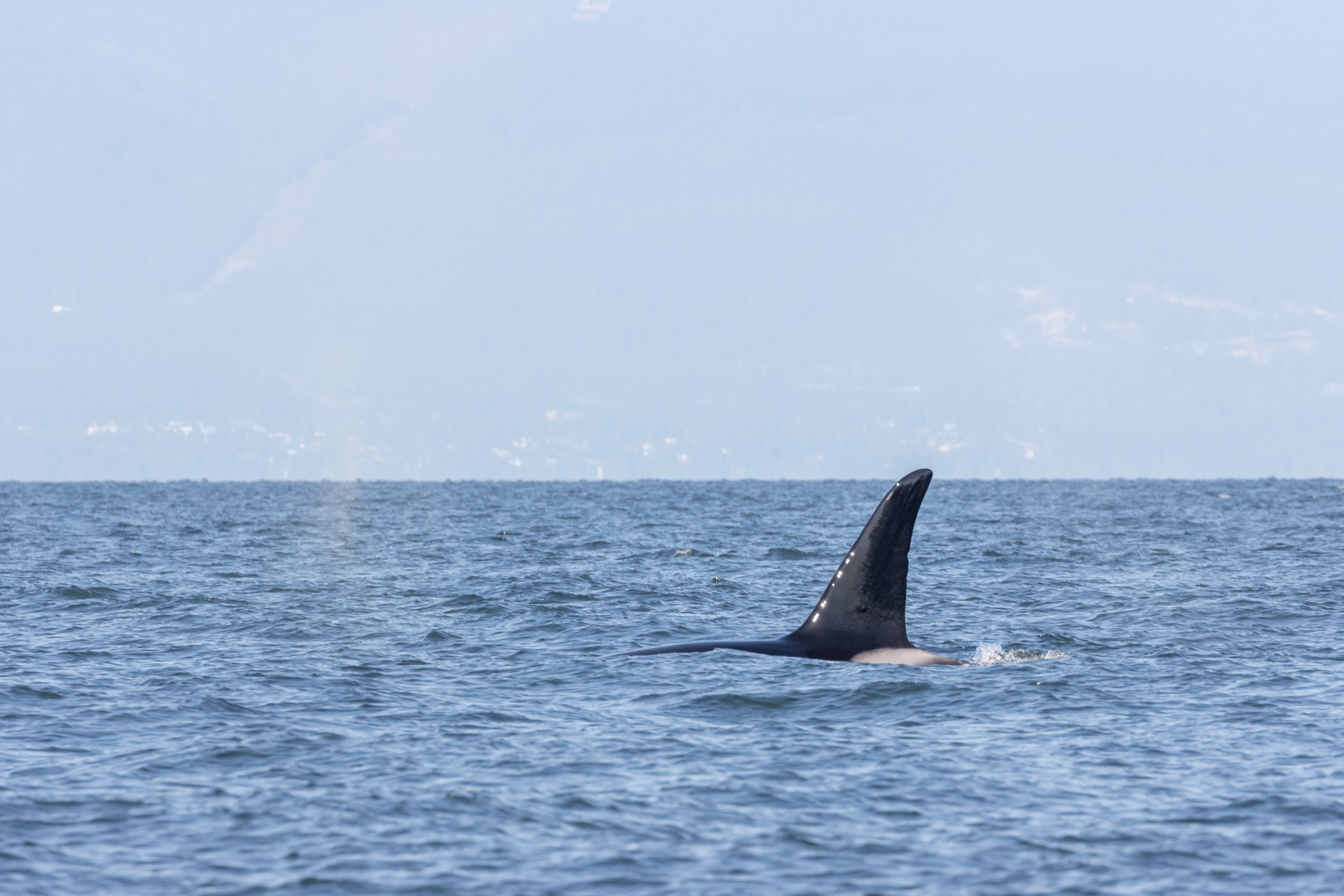September 1st 3:30 PM - The T100s along Valdes Island and Potamus the humpback!
For the afternoon tour, we left the harbour thinking of going back to visit Sherwina the humpback that we watched during the morning when another boat let us know that they had found orca, so instead of heading north, we turned south and headed that direction. We travelled through the southern gulf islands to where the T100s were travelling along the outside of Valdes Island. The T100s is another pod that we have been seeing a lot of in the Nanaimo area. It is a pod consisting of 4 whales:
T100 Hutchins (1979)
T100C Laurel (2002)
T100E Tharaya (2009)
T100F Estrella (2014)
This pod was travelling northwest along the Valdes shoreline. As you can see from the birth years Hutchins was averaging a new calf every 4-5 years, but she hasn’t had one in the past 8. This is a good indicator that she may have gone through menopause! Orca and humans have a very similar life history, with them reaching sexual maturity in their early teens, having the ability to have kids every two years or so, and then they go through menopause and continue leading their pod until they die, around 90 years old for females. The males don’t live as long, usually not making it past 50 years old or so (although there is a 60-year-old male in the transient population right now). The leading theory is that since the orca are very intelligent animals the matriarch has a ton of knowledge that benefits her pod and helps them know where to forage and travel to be most successful. She will also help her daughters raise their own kids to help take some of the pressure off the newer mothers. The males will also stick with their moms for most of their life until she eventually passes away. When that happens they can travel either by themselves, with their siblings, or with any pod that they like. Although males aren’t great dads, they make great brothers and uncles and also play a role in helping the females raise their young within their pod.
Luckily we should keep seeing Hutchins travelling with her family for many years to come. When we left the pod today we got to stop for some Harbour Seals and Sea Lions before continuing north, back towards the Nanaimo harbour. Before we could get there, we saw blows in the distance, it looked like humpbacks! As we got closer we found two humpback whales doing feeding dives east of neck point park in Nanaimo. From the bottom side of their tail flukes, we identified these two as KEY0026 Potamus and KEY0034 Sherwina. They are both Y-type whales, meaning they have between 20-80% of their tail flukes white. Although they share the same amount of white, you can see the difference between them by looking at the photos.
Please enjoy all the photos taken by onboard naturalists Aly Kohlman and Janine Van Der Linden.
Laurel (T100C). Photo by Janine Van Der Linden.
Laurel (T100C). Photo by Janine Van Der Linden.
Laurel (T100C). Photo by Janine Van Der Linden.
Laurel (T100C). Photo by Janine Van Der Linden.
Estrella (T100F). Photo by Janine Van Der Linden.
Laurel (T100C). Photo by Janine Van Der Linden.
Potamus (KEY0026). Photo by Aly Kohlman.
Potamus (KEY0026). Photo by Janine Van Der Linden.
Potamus (KEY0026). Photo by Janine Van Der Linden.
Potamus (KEY0026). Photo by Janine Van Der Linden.
Potamus (KEY0026). Photo by Aly Kohlman.
Potamus (KEY0026). Photo by Aly Kohlman.
Sherwina (KEY0034). Photo by Aly Kohlman.
Sherwina (KEY0034). Photo by Aly Kohlman.
Sherwina (KEY0034). Photo by Aly Kohlman.
Photo by Janine Van Der Linden.
Photo by Janine Van Der Linden.
Photo by Janine Van Der Linden.
Photo by Janine Van Der Linden.
Photo by Janine Van Der Linden.
Photo by Janine Van Der Linden.























